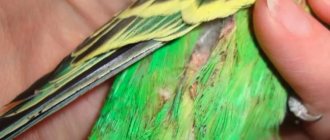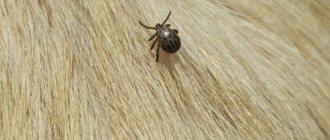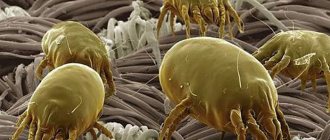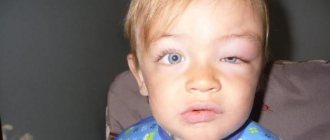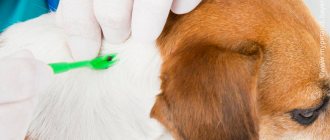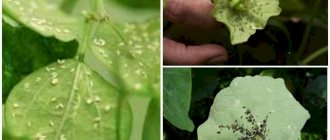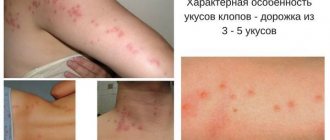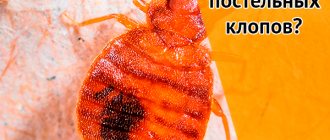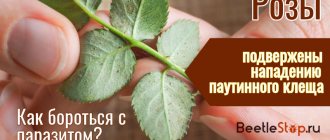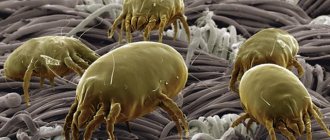Home breeders of budgies should be aware that many dangers await their pets. One of them is tick damage. This can lead to the death of the bird. But knowledge about the main types of these parasites, ways to combat them, and measures to prevent infection will help minimize the danger from them. In our article we will talk about the main types of ticks, the symptoms of their infestation, and how to cure feathered pets.
Sources and causes of tick infestation
First, let's figure out where parasites come from in our parrots.
Firstly , this is poor quality food. Some feed may be contaminated even at the packaging stage. Fresh fruits and vegetables, greens and grass can also contain ticks and their eggs.
Cause of mite infestation in a parrot
Secondly , everything that gets into the cell of organic origin - branches, wooden and rope products, objects taken from the street - can contain parasites, even if they are brought from “clean” places. Ticks also love to live there.
Thirdly , the new neighbors are budgies, just purchased by breeders. Newly purchased birds that are planted can bring uninvited guests with them.
And fourthly , general cleanliness in the house where the birds are located. Dirt from the street brought with shoes or pets can easily contain parasites or their eggs.
Preventive measures
To prevent infection of domestic budgies with parasites, it is necessary:
- Clean the cage regularly, and wash the water bowl and feeder every day. Leftover food must be discarded promptly.
- Purchase food made only from trusted manufacturers. You need to buy it only from sellers who have all the necessary permits.
- Subject to mandatory quarantine of all newly purchased parrots. They must be kept separately from other pets for 40-45 days.
- Pour boiling water over vegetables and fruits before placing them in the feeder.
A budgerigar tick infestation is a very unpleasant and painful condition. Its treatment does not require special medical knowledge and can be carried out independently. But the best way out is effective preventive measures to dramatically minimize the risk of ticks infecting your budgerigar.
Previous
DiseasesParrot diseases, symptoms and treatment
Types of mites on parrots
Each type causes its own disease in birds. Veterinarians recognize four groups of parasites:
- Scabies - feeds on the skin and fluid secretions of parrots. It lives, reproduces and moves directly in the epidermis, as well as in non-feathered areas - near the beak, eyes, paws. In these places, outgrowths appear that may contain a colony of ticks.
- Tracheal is the most dangerous type. Penetrates into the trachea and lungs of birds. It multiplies almost uncontrollably. It feeds on the integument and secretions of internal organs.
- Ochinny are parasites that make their way inside the cavity of the flight feathers, causing a characteristic darkening of the rods. They feed on lymph and skin. When heavily infested, they form large settlements.
- Feather mites are a type of mite that lives directly on the body of a parrot. It feeds on the down of the bird, gnawing off the feathers, leaving only bare shafts.
Types of ticks on a parrot
Prevention
After the tracheal mite has been exterminated, you need to thoroughly clean the room. Wash all surfaces with disinfectant and ventilate the room well. It is advisable to throw away the old cage along with all accessories, then the risk of re-infection will be close to zero.
What should be done to prevent ticks from appearing on parrots?
- provide birds with proper nutrition;
- observe quarantine;
- regularly clean and disinfect the cage;
- pour boiling water over the branches;
- buy proven food.
Stages of the disease
For proper treatment, veterinarians distinguish several stages of acariasis in parrots. Let's look at their main characteristic symptoms.
initial stage
This period means that the bird has acquired a parasite. The disease may not manifest itself in any way either in appearance or behavior. The parrot's immune system actively fights mites. If the bird is healthy, eats well, receives all the necessary vitamins, has no wounds and is not replenishing new parasites, then it is possible that the body will win the fight and the disease will never manifest itself. If these conditions are violated, the mites become attached to the bird’s body, and the disease begins to develop.
Easy stage
The bird shows anxiety, itches, and pulls out fluff and feathers. Since ticks are predominantly nocturnal, they begin to cause inconvenience to the parrot in the late afternoon. Therefore, the first call to the owner is the wavy’s restless behavior at night. When infected with a tracheal parasite, the timbre of normal sounds in a bird will begin to change - wheezing and whistling will be added. In this case, the parrot will constantly scratch its beak on the cage bars and other objects. The trimmers will “draw” the contours of the feather shafts. These symptoms are already more than enough for the owner to begin taking measures to treat the pet.
Feather mite on a parrot
Middle stage
The third period is marked by a rapid increase in the number of ticks. The parrot's immune system is suppressed and cannot cope with infection. Birds become lethargic and lose their appetite. Fighting the disease becomes their only active occupation. They pull out feathers, itch against the bars of the cage, and peck at the affected areas on the legs and wings until they bleed. Parasites of the primary type spread throughout all remaining flight feathers. An expanded population of tracheal mites fills the pulmonary ducts and penetrates the esophagus. Hence the problem with breathing and appetite. The bird throws its head back, trying to swallow or breathe. The changes in voice are quite obvious. Feather mites at this stage also actively destroy the bird's down. If these symptoms occur, your parrot must be treated immediately.
Scabies mite
Severe stage
This short time is characterized not only by the damage that ticks cause to birds, but also by damage from their waste products. The secretions of the parasites are extremely toxic and the parrot is not able to recover from this poisoning on its own. Lethargy, exhaustion, in case of tracheal infection - suffocation, inhibited neurological reactions lead to paralysis and death. In this situation, only urgent veterinary intervention can save the bird. When infected with a tracheal mite, the prognosis at this stage is almost always fatal, since all the pulmonary passages are clogged with dead and living parasites, as well as their secretions.
Differences between a healthy bird and a sick one
It is not difficult to distinguish a healthy parrot from an infected one. A healthy pet is characterized by:
- Cheerfulness;
- gaiety of spirit;
- liveliness of reaction (to everything around).
If the pet is healthy, you can hear its chirping and bird songs all the time. When resting, the parrot stands on one leg. There are also characteristic external signs of health and well-being:
- The bird's eyes are wide open;
- the feather cover is smooth, rich in color.
There are many more possible signs of illness in a parrot. These include:
- Lethargy;
- diarrhea or constipation;
- trembling and chills;
- contamination of feathers under the tail;
- changes in the appearance or shape of the beak and talons;
- changes in litter or stool problems;
- cough;
- inactivity;
- presence of discharge from the nose or eyes;
- baldness and loss of feathers;
- formation of compactions in the body;
- rounding of the abdomen;
- swelling of any part of the body;
- lack of appetite;
- passivity;
- increased temperature (may appear in individual places);
- redness of the eyes;
- loss of balance;
- the appearance of scale growths on the paws or beak;
- limping;
- problems with the gastrointestinal tract;
- irritation or redness of the anus;
- beak delamination;
- self-plucking;
- extreme thirst or refusal to drink;
- nausea;
- heavy breathing (sometimes with whistling or wheezing);
- thickening of joints;
- deterioration in the appearance and quality of feather cover.
If the bird is lying on its stomach or sitting with a ruffled look, this is a cause for alarm. Birds behave this way when they feel unwell. In addition, it is worth taking a closer look at your pet if he sleeps while standing on both legs. It is also worth visiting a veterinarian if your parrot:
- When inhaling and exhaling, it moves the whole body;
- hardly opens eyes or squints;
- constantly shakes his head sharply;
- keeps its beak open all the time;
- itches severely and often;
- does not use one of its paws at all and periodically pecks at it.
Any of the symptoms mentioned (and even more so their combination) is difficult to miss, unless, of course, the pet is left to its own devices. These signs cannot be ignored - the problem will only get worse. If alarming symptoms are detected, you should immediately contact an ornithologist veterinarian. The parrot does not have a strong body, and the development of diseases occurs at an incredible speed
It is important to remember that delay can cost the bird its life
Symptoms of infection with knemidocoptic mange
The topic of infection of parrots with scabies mites deserves a separate discussion. This is the most common type of acariasis. After acquiring the parasite, the bird does not show any signs of disease, since the incubation period of the mite is up to 4 months. If a budgie has good immunity, then it will cope with the infection on its own. If the disease develops unfavorably, the tick begins its activity, actively multiplies, and gnaws holes in the host’s skin.
Knemidocoptic mange in a parrot
Indicative of infection will be the formation of growths on non-feathered areas - near the beak and eyes, on the paws. At first these will be small areas of dead skin and scales, then, as the disease progresses, they will increase, taking the form of ugly tumors, growths and thorns. Another characteristic external manifestation is the loss of feathers as the tick infestation progresses. The bird's behavior becomes restless, especially in the evening and at night. The parrot scratches itchy places, stands on one leg for a long time, and pecks at tumors.
Necrosis of the joints of the lower extremities is possible, and, as a result, loss of the phalanges of the fingers and even paws. When an infection develops, the remains of the tick's vital activity cause a toxic blow to weakened health. Toxic substances affect internal organs, and a sad outcome is very likely - the death of the pet. Igor Ignatenkov
Possible complications
The most noticeable complication that can be caused by a tick is serious deformation of the beak. This can happen as a result of delayed or incorrect treatment. In this case, constant beak trimming may be necessary throughout the bird's life.
If treatment was started late, it may be difficult to remove the scaly mite, then get ready for regular treatment courses. In particularly advanced cases, in addition to a deformed beak and loss of feather cover, the disease may even develop in such a way that the bird’s joints become inflamed and it may lose its paws.
The process of treating poultry at home
It is worth noting that any veterinary procedures should be carried out only after an accurate diagnosis has been made. This is justified by the fact that the symptoms at the first stage of infection are similar to each other and to the signs of other diseases. First, if acariasis is suspected, the bird should be shown to a doctor. Having established the cause and type of tick, the veterinarian will prescribe treatment, which is usually carried out at home.
How to CURE A PARROT for a TICK//SCABIES MITE TREATMENT//CURE FOR A TICK//green parrot TV
Quarantine keeping of poultry
At the first suspicion of infection, the wavy should be transplanted into another cage, especially if the birds live in pairs. The neighbor is also put away. He will also have to undergo treatment. This is necessary for the reason that it is more likely that both parrots are carriers of parasites, it’s just that one of them developed symptoms of the disease more quickly. During quarantine you should:
- clean the cage more often;
- change litter daily;
- Do not leave leftover food.
Read also
Can budgerigars have fleas?
And the bird will have to sit without flying, since when flapping its wings, ticks, eggs and larvae can scatter around the room and become new sources of infection.
Pet handling rules
So, the vet prescribed treatment. Conventionally, it can be divided into two types:
- local application;
- taking drops orally.
- External processing . Each prescribed medicine has its own period of application to the feathered patient. It is important to maintain the regimen of using drugs, as they have a negative effect on the body of the parrot itself. It is possible to reduce the time between procedures only if the condition worsens. You need to use a thin layer of the drug on the affected areas - paws, areas near the eyes, near the beak, trying not to touch the mucous membrane, nostrils. The main tool is cotton swabs or a regular brush. If we are talking about aerosol or liquid preparations, then they are splashed or dripped onto the withers of the bird and at the base of the wings. The time for the procedure is chosen when the wavy is least active.
- Internal reception . When infected with a tracheal mite, the medicine (Ivermectin and drugs based on it) is given 1 drop into the bird’s beak, and the next dose only after 10-14 days (this is the incubation period of these parasites). You must be very careful when carrying out the procedure, since the medicine itself is very toxic. After 6-8 hours, you need to give the bird a sorbent to protect the liver (activated carbon, enterosgel).
Effective treatment for a parrot|Scabies mite|Symptoms and stages of the disease|How to treat|
Disinfection of the cage and accessories
After treating your parrot, it’s time to start treating and eliminating ticks in the cage. Organic materials - wood, rope, paper, cardboard - all need to be thrown away. Metal objects and plastic are treated with an antiseptic solution (Butox, Ecocide). The applied product should not be washed off immediately to allow the active ingredients to act on the parasites. It would be correct to clean the entire room where the parrot is kept with cleaning agents.
Read also
How to disinfect a parrot's cage
Medicines and folk remedies
Now let's talk about medications that help cure acariasis.
We have already talked about Ivermectin. It is prescribed for tracheal mite infestation. Other products are also prepared on its basis - Ivermek, Otodectin. They are used internally and locally. They differ in the content of the active substance.
For the treatment of external infections, Aversectin ointment and its varieties Avermectin and Norvertin are prescribed.
If store-bought medicines are unavailable, you can use a handy remedy - Vaseline oil. This approach requires more time to process the poultry - up to 2 times a day, and relapse is possible, since the oil does not affect mite eggs. In this case, the procedures are repeated or switched to more effective drugs.
Treatment in the clinic
Modern veterinary medicine can help a feathered patient even with severe forms of infection. In cases where urgent therapy is required and the owners are afraid to carry out medical procedures, you can always contact the nearest clinic, where professionals will perform all the necessary manipulations. It can be:
- droppers;
- injections;
- surgical intervention.
A classic case of a tick (Knemidocoptes mutans) on a call in a budgerigar
In the latter case, hospitalization with appropriate monitoring is inevitable.
Required funds
To treat the affected areas, purchase one of the following medications:
- frontline spray (spray, not drops);
- otodectin 0.1% ivermectin solution;
- chamomile (if nothing else is found).
Chamomile infusion
If you were unable to find these drugs, you can use others:
- arpalite;
- insectol;
- celandine spray.
Unfortunately, I have no experience in treatment with medications from the second list, so you will not find information about treatment with them here.
To strengthen your parrot's immunity:
- gamavit (required);
- catozal (optional);
- allowed vitamins.
Gamavit
Due to the high cost of catozal, it is not necessary to buy it. At the veterinary pharmacy, you can ask to draw a portion of catosal into an insulin syringe and buy only that, and not the whole bottle.
To treat the cage and perches, one of the preparations:
- butox;
- neostomozan;
- ecocide S.
The best option would be butox. The weakest of these three drugs is Ecocide S.
These drugs are very toxic, so it is necessary to wash the cage very carefully after treatment.
Additional accessories:
- quarantine cage (or disposable boxes with air holes);
- plastic perches;
- flower spray - atomizer;
- cotton buds;
- syringe.
